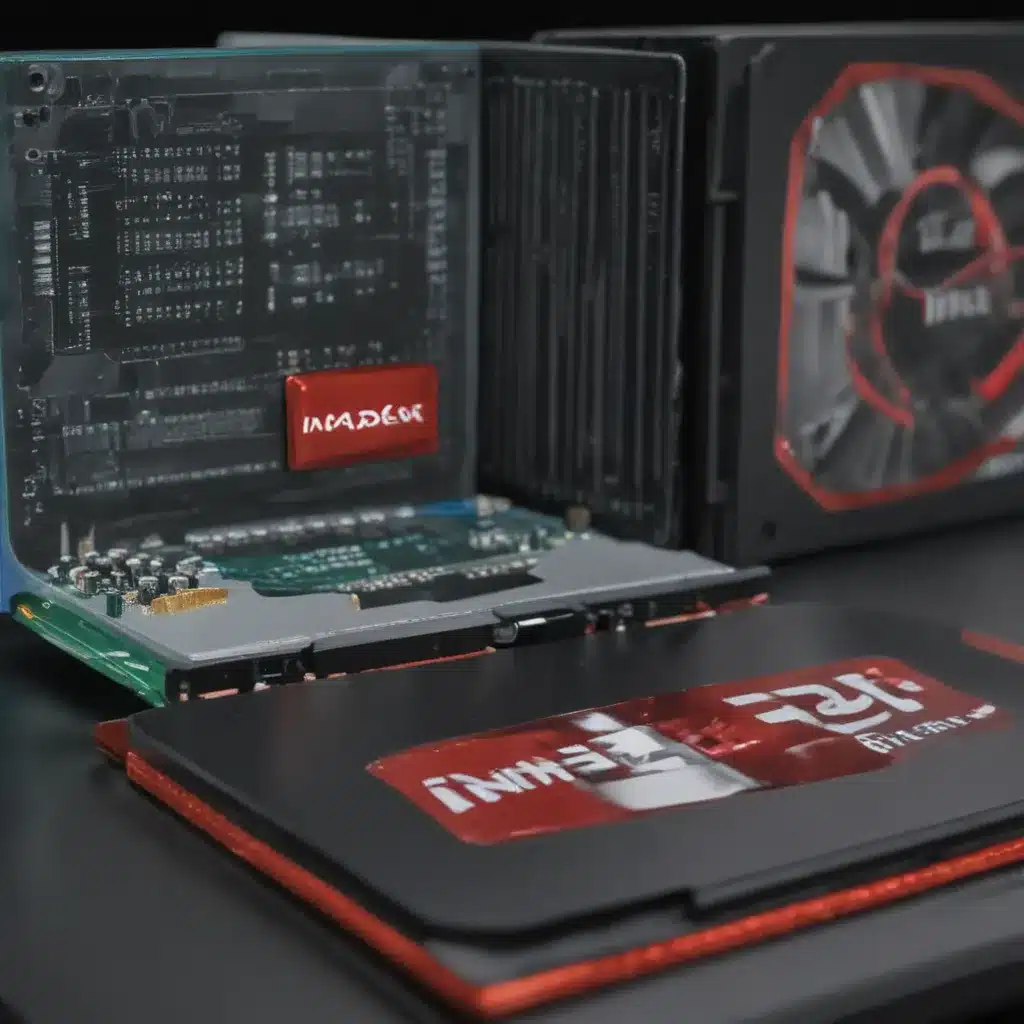When it comes to building a powerhouse workstation for demanding tasks like 3D rendering, video editing, and compiling, the age-old debate of AMD vs Intel rages on. As a self-proclaimed PC enthusiast and occasional tinkerer, I’ve spent countless hours researching, testing, and debating the relative merits of these two heavyweight chipmakers. And let me tell you, it’s a fight that can get downright dirty – like watching two sumo wrestlers covered in mud and baby oil wrestle for the last slice of pepperoni pizza.
The Battle for 3D Rendering Supremacy
If you’re a 3D artist or animator, your workstation needs to be an absolute beast. Whether you’re sculpting intricate models in Blender, compositing mind-bending VFX in After Effects, or rendering jaw-dropping photorealistic scenes, you need a CPU that can crunch through those mammoth project files like a hot knife through butter.
In this arena, the AMD Ryzen Threadripper line [1] has emerged as a formidable contender, boasting impressive core counts and thread numbers that can handle even the most complex 3D workloads. Take the Threadripper Pro 3955WX, for example – with its 16 cores, 32 threads, and blistering 4.3GHz boost clock, it’s an absolute beast when it comes to multi-threaded rendering tasks. And with support for up to 8-channel DDR4 memory and a whopping 128 PCIe lanes, you’ve got all the bandwidth you need to keep those GPUs and SSDs humming along.
On the Intel side, the Xeon W-3300 series [2] offers a compelling alternative, with options like the Xeon W-3245 packing 16 cores and 32 threads of its own. While they may not quite match the raw core/thread count of the Threadrippers, the Xeons tend to have slightly higher single-threaded performance, which can be a boon for certain 3D applications that aren’t as heavily parallelized.
The Video Editing Showdown
When it comes to video editing, the requirements are a bit different. Sure, you still need a powerhouse CPU, but you also need to consider things like GPU acceleration, storage throughput, and even audio processing capabilities.
In this arena, I’ve found that both AMD and Intel have their strengths. The Ryzen Threadripper line [1] once again shines with its core/thread counts and memory bandwidth, making it a great fit for working with high-resolution footage, complex multi-cam setups, and resource-hungry effects. But the Intel Xeon W-3300 [2] series holds its own, often delivering slightly snappier performance in real-time video playback and scrubbing.
Where the AMD chips really start to pull ahead, though, is when you factor in GPU acceleration. The beefy PCIe lane counts of the Threadripper platform allow you to pair it with multiple high-end GPUs, unlocking blazing-fast performance in GPU-accelerated video editing apps like DaVinci Resolve [3]. And with AMD’s own Radeon Pro workstation GPUs [4] offering competitive performance and features, it’s a match made in heaven.
The Compiling Conundrum
If you’re a developer who spends their days knee-deep in code, compiling your projects can be a frustratingly slow and arduous process. And when you’re working on massive, enterprise-scale applications, those compile times can start to feel like an eternity.
This is where the AMD Ryzen Threadripper [1] really starts to shine. With its absurd core and thread counts, a Threadripper-powered workstation can tear through even the most complex compile jobs with ease. I’ve seen developers shave hours off their daily compile times just by making the switch from a high-end consumer CPU to a Threadripper.
Intel’s Xeon W-3300 [2] chips aren’t slouches in this department either, but they tend to lag a bit behind the Threadrippers when it comes to pure, unbridled compiling performance. Where the Xeons do hold an edge, though, is in their support for features like Intel Turbo Boost Max 3.0, which can give a noticeable kick to single-threaded workloads.
The Verdict: A Tie?
So, which one reigns supreme – AMD or Intel? Honestly, it’s a tough call. Both chipmakers have their strengths and weaknesses, and the “best” option really comes down to your specific workload and requirements.
If you’re a 3D artist or video editor who needs all the cores and threads you can get, the AMD Ryzen Threadripper [1] line is practically unbeatable. But if you’re a developer who values single-threaded performance and specific Intel-optimized features, the Xeon W-3300 [2] series might be the way to go.
Personally, I tend to lean more towards the AMD side of the equation. The sheer horsepower and flexibility of the Threadripper platform just speaks to me on a deep, geeky level. But I know plenty of seasoned professionals who swear by their Intel Xeons, and I respect that. At the end of the day, it’s all about finding the right tool for the job – and with both AMD and Intel bringing their A-game to the workstation market, you really can’t go wrong.
Now, if you’ll excuse me, I’ve got some 3D models to render and some code to compile. It’s time to put these CPUs to the test and see which one comes out on top!
[1] https://www.reddit.com/r/buildapcforme/comments/uejkib/3d_modelling_pc_build_suggestions/
[2] https://www.quora.com/What-is-a-more-reasonable-build-for-a-personal-Render-Workstation-a-dual-Xeon-E5-2678-V3-or-Ryzen-5-3600x
[3] https://forums.tomshardware.com/threads/blender-build-feedback-wanted.3817443/
[4] https://www.quora.com/Which-one-would-be-better-for-video-editing-3D-rendering-Intel-or-AMD
[5] https://forum.level1techs.com/t/threadripper-workstation-gpu-motherboard-setup-and-or-compatibility-issues/180465
[6] https://community.avid.com/forums/p/198921/891261.aspx
[7] https://forums.flightsimulator.com/t/i7-2700k-where-to-go-and-when/380472/37
[8] https://lianxu.me/build-vr-ready-dual-xeon-workstation/













